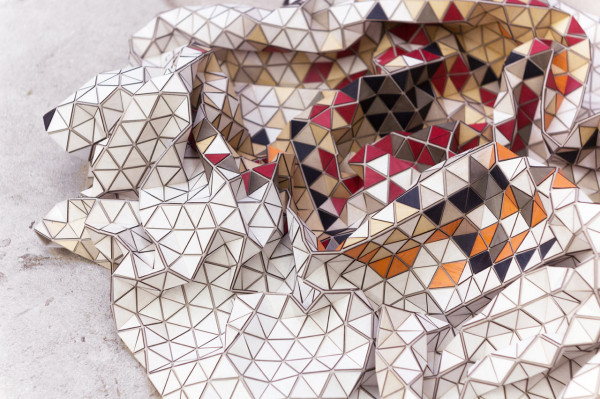6. Textile as Scaffold#
About this week#
This week, I milled a mold with our small table CNC-milling machine to emboss a textile afterwards. The second part of this week were some exciting and awesome experiments with the composite fabric and wood.
Research#
My inspiration came from the german designer Elisa Strozyk. She crafts beautiful flexible textiles out of wood and a series of rugs featuring colorful geometric patterns. You can see her work on this webpage


CNC-milling with Carvey#
I had a date with my little friend Carvey.
Carvey is a 3D carving machine that allows you to make quality objects out of a variety of materials including wood, metal and plastic. Using Carvey and the free design software in three easy steps. First, design your product using the software, next choose your material, then click carve. I uploaded a pattern designed in Illustrator as a svg-file. The Carvey software automatically creates a three-dimensional shape for milling from an image file.
On this Webpage you can find more details about the Carvey: Inventables Carvey Webpage
File preparation#
I drew a very simple honeycomb pattern to test the technique of textile embossing. I made a 2D drawing in Adobe Illustrator. You can download the file here.

milling the mold#
I have milled a positive and a negative MDF mold to shape a structure into a textile. The fabric was coated with epoxy adhesive, placed in the mold and fixed with screw clamps.


After curing the adhesive for 12 hours, the textile could be removed from the mould. The honeycomb structure was clearly imprinted in the textile.

Wooden-textile#
The second part of the weekly assignment was to create a composite with textile. I decided to try the composite with jeans-fabric, MDF (wood) and wood glue.
To create a flexible composite textile, I wanted to use the laser cutter to engrave a honeycomb pattern into the 1mm thick MDF. The denim underneath (fixed with wood glue) should not be engraved. As you can see in the pictures, I needed a few tries to figure out the perfect laser settings.

In this picture you can see my lasercutter settings to encrave only the wood and not the textile underneath.

Result of wooden-textile#
The result was more than satisfactory. With this composition you can combine wood and textile and turn them into a flexible unit. The flexible composite textile can be used to create a beautiful bracelet or belt during further processing.
